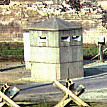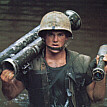 |
1945-1990 |
 |
 |
1945-1990 |
 |
|
"Every warship launched, every rocket fired signifies . . . a theft from those who hunger and are not fed, those who are cold and are not clothed."  |
LECTURE OUTLINE |
currently unavailable. |
|
OVAL OFFICE |
|
|
WHAT'S MY LINE? |
|
|
|
PRIMARY SOURCES / DOCUMENTS |
|
 |
EXTENDED RESPONSE |
| 1. In what ways did the Cold War actions of Dwight D. Eisenhower, John F. Kennedy, and Lyndon B. Johnson maintain the policy of containment developed during President Harry S Truman's administration? Cite specific examples. 2. Describe and contrast the Truman Doctrine, the Marshall Plan, the North Atlantic Treaty Organization, and the Eisenhower Doctrine as devices to achieve American objectives in the Cold War. 3. Discuss the emergence and decline of the post-war wave of anti-Communist hysteria, including McCarthyism, citing specific events for each occurrence. 4. Compare the Cold War philosophies of the United States and the Soviet Union. How were these ideologies reflected in the formation and purpose of the North Atlantic Treaty Organization and the Warsaw Pact? 5. Select any three of the following events and describe the impact of each on the Cold War—Berlin Airlift; U-2 incident; Bay of Pigs invasion; Cuban Missile Crisis; invasion of Afghanistan. 6. "War has united Americans more closely than any other national activity." Assess the validity of this statement by using references to American history during any two of the following time periods—1783-1800; 1812-1824; 1865-1877; 1898-1917; 1919-1929; 1945-1962. |
CHEAT SHEET |
|
REWIND & FAST FORWARD |